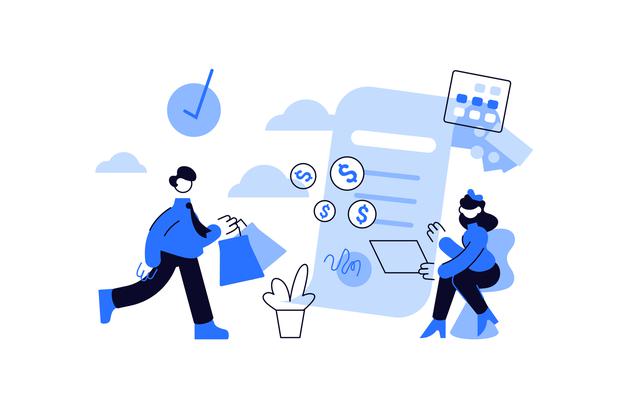BNPL platforms are becoming a popular way for businesses to offer their customers flexible payment options. But what exactly is a BNPL platform, how does it work, and can it benefit your business?
According to a recent analysis, the global BNPL platforms market was valued at over £5.2 billion in 2019 and is expected to reach over £24 billion by 2027.
In the UK, BNPL contributed 5% of the e-commerce payment sector in 2020. Klarna has a massive part to play in this with over 980,000 app downloads, compared to Clearpay which had only 298,000 downloads.
With Klarna’s heavy social media presence, it’s no surprise that Millennials and Gen Z are the age group most aware and interested in this type of payment.
Millennial and Gen Z customers prefer to use their credit cards for purchases on the internet. Millennials and Gen Z are more likely than any other age group to use Klarna for shopping online. If this age group falls into your target market, you could be missing out by not offering BNPL. However, it’s not just the younger generations that are showing interest in this type of payment on a global scale.
Younger generations in the United States were not using buy now, pay later (BNPL) as often in 2020 as their older counterparts, but this had changed by March 2021. The age difference could largely be affected by the fact that PayPal Credit was the BNPL leader within that space.
BNPL Benefits for Consumers
Customers are more likely to buy products if they can pay for them in instalments rather than the full-price upfront. Customers know that with BNPL financing they can try before they buy, and if they don’t like the item they don’t have to wait weeks for a refund. Consumers can spread the cost of their purchase into 3 interest-free instalments, pay full up to 30 days later or opt for financing for bigger purchases that can be spread over 6-36 months.
What’s the catch for businesses?
You’ll pay a transaction fee each and every time consumers shop on your website or in-store with BNPL providers like Klarna. This payment model is similar to all other payment methods that retailers use such as credit cards and debit cards. They all have a fee, it’s only old-fashioned cash that doesn’t come at a price.
With fees that are similar to those you’re already paying to process card transactions, it’s hard to see why you wouldn’t offer BNPL. Especially when Klarna states that having them as a payment solution leads to a 44% increase in orders and a 68% increase in order volume.
A BNPL provider charges merchants a fixed transaction fee and a percentage of the sale. This means businesses don’t have to worry about lost revenue if they can’t collect payment from customers in time, or when someone returns merchandise after purchase.
How do BNPL payment providers make money?
Klarna generates the bulk of its revenue by charging merchants a fixed transaction fee and a variable percentage fee. The fees are dependent upon the payment method the customer chooses as well as the country.
As a guide, some BNPL providers may charge a monthly product fee, a fixed transaction fee, or variable fees up to 3.29% for onsite and 3.79% for off-site sales.
Is it worth integrating BNPL into your business?
There are certainly massive benefits to offering your consumers BNPL options. One thing is for sure, to convert a consumer into a customer, online merchants need to invest into more than just customer experience; you need a seamless point of sale experience that meets consumers expectations.
BNPL delivers a quick, simple and frictionless payment process and is a viable alternative to traditional payment methods. Customers are increasingly using BNPL providers, which means while using the service your business is being exposed to a new pool of customers which is great for any growing business. With reported fewer abandoned purchases, and more happy customers, your business could thrive.
It’s essential to provide as many payment options as possible and give your consumers their preferred choices. There is no one right way to seamlessly integrate BNPL into the customer journey, and each business will need to choose what works for their lending needs. As always you must consider the drawbacks for your business.
Article by Total Processing.
